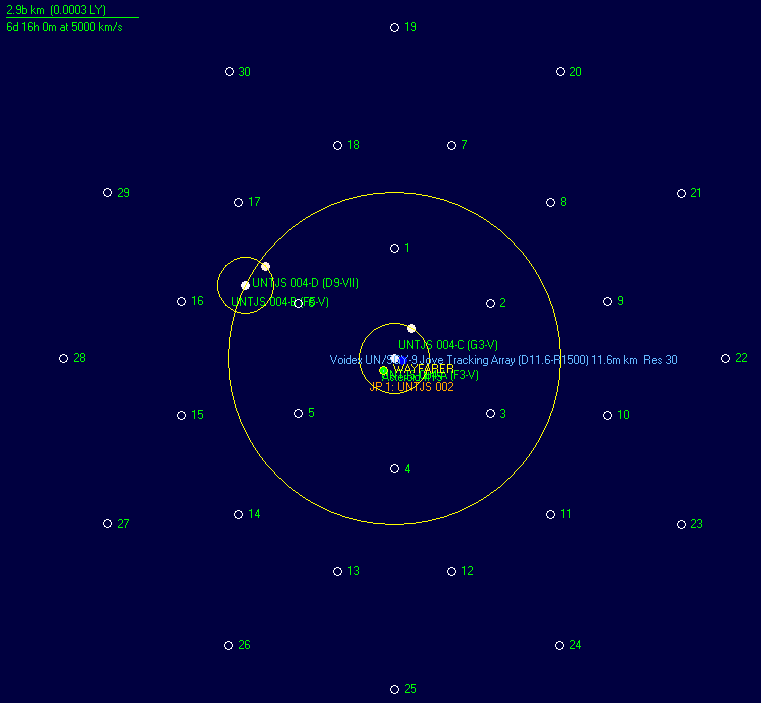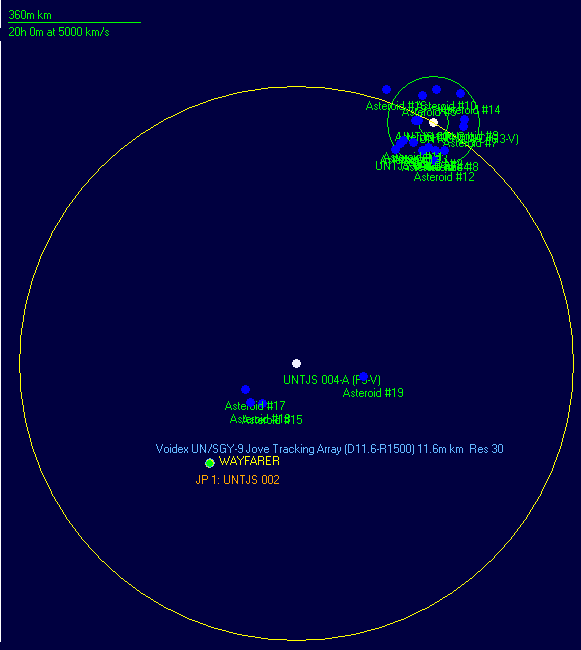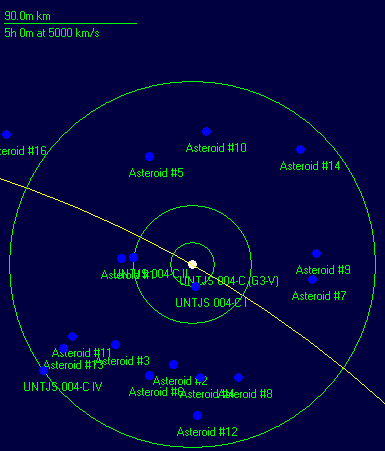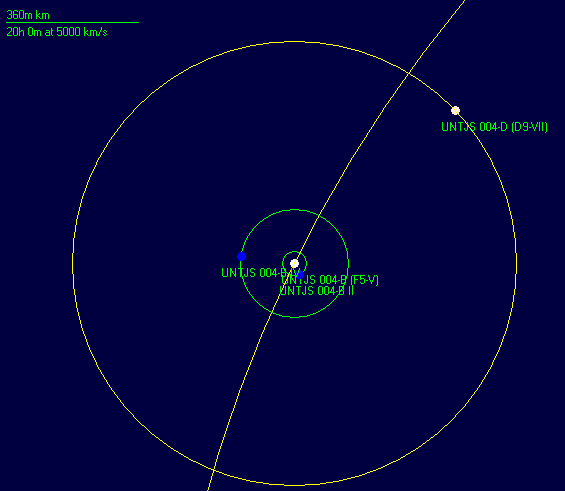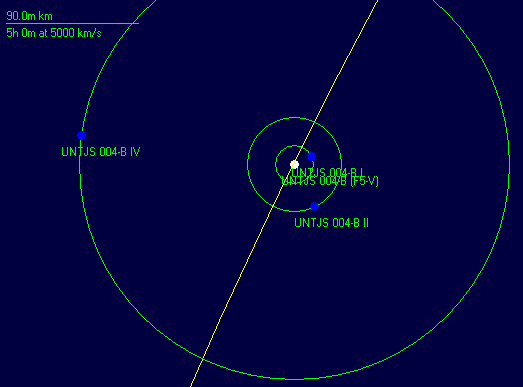Sonora
Link to Systembodies Raw Viwer
Right Ascension: 20h 24m
Declination: 21° 51'
Distance: 170.16 parsecs (555 light years)
Sonora, originally designated UNTJS 004, is a UN claimed quadrinary solar system accessed from the Hakahaka crossroads.
Albeit being the only explored quadrinary system so far, Sonora only has a small number of planets, most of them are barren, scorched or Venus-like. The outermost planet of the C component contains huge deposits of all known TN minerals. However, their accessibility is so low that they would be extremely inefficient mining prospects.
Sonora has an unexplored jump point 1.91b km from the primary.
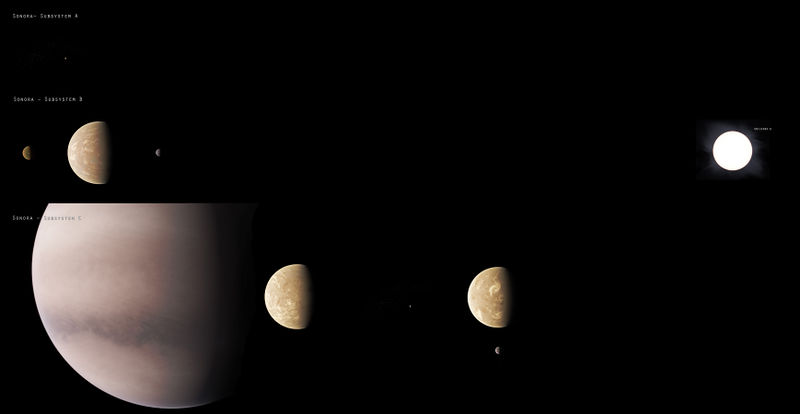
Geography
The system primary is a bright yellow-white main sequence star 40% wider and more massive than Sol, and 280% as bright. The primary itself is orbited by a few asteroids between 40 and 800 km in diameter.
The B and C components of the system both orbit the system primary at distances of 24 and 5 AU, respectively, taking 71 and 7.2 Earth years to orbit. The B component is similar to the primary, though less massive and only about 72.5% as luminous. The C component is similar in size and mass to Sol, but is only about 60% as bright. The D component, a small white dwarf about 0.01% as bright as Sol, orbits the B component at a distance of 4 AU. The D component has no orbiting bodies.
The B component has a small planetary system consisting of a terrestrial planet (B I) orbiting a scorching 12.9m km from the surface of the star. With a temperature of over 1000 K, the surface is expected to be partially or fully molten in many areas. Further out at 32m km, there is a Venus-style world (B II) twice the size of Earth, with an atmosphere consisting of nearly 131 atmospheres of carbon dioxide. Its surface gravity is well beyond the upper limit thought to be capable of supporting human habitation and its surface temperature is a broiling 1375°C. Finally, at 146m km out, is a small airless planet (B IV) about a third the size of Earth. Its surface gravity is a comfortable 0.42 g, but its surface temperature is a steamy 76°C, too high for long term settlement.
The C component has the most extensive planetary system of any of the stellar bodies, though it is still rather small in comparison to Sol or Zhongguo.
- The innermost planet is a Jupiter-sized, moonless gas giant (C I) orbiting extremely closely to the star (14.7m km).
- Next out is another Venus-style world (C II), choked with a carbon dioxide / nitrogen dioxide atmosphere of nearly 200 atmospheres and with a surface gravity 288% higher than Earth's.
- Between C II and C IV, the next planet out, is a small asteroid belt with sixteen notable bodies (including one with a diameter of over 1000 km), between 48m and 156m km from the C component.
- The outermost planet of the C component is another Venus world, with a thick (138 atm) carbon dioxide / nitrogen dioxide atmosphere. The planet is about twice the size of Earth, with nearly three times the surface gravity, making it further unsuited for human habitation. However, it possesses three moons, one with a diameter and surface gravity about 1/4 that of Earth. While it has no atmosphere, its surface temperature of -16.8°C is the closest to human-tolerable temperatures of any body in the system. The addition of a breathable atmosphere would reduce the colony cost of the body to a paltry 0.3, the lowest of any known body outside of Earth. C-IV The has massive deposits of all known TN minerals, with nearly 260 million tons of duranium alone. Unfortunately, with the exception of corundium, the accessibilities of these minerals are all extremely low, making them inefficient sources of minerals, despite the fact that the body contains more than ten times the mineral wealth of the entire solar system.
The entry jump point from Hakahaka is 357m km from the A component at bearing 221°.
System Schematics
Fig. 1: An overview of Sonora.
Fig. 2: A detail of the inner system, with the A and C components in view.
Fig. 3: Detail of the planetary system of the C component.
Fig. 4: Detail of the B component's planetary system, with the D component white dwarf visible.
Fig. 5: Futher zoom on the B component's planetary system.

